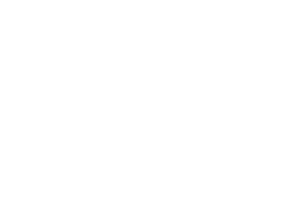Just 40 miles from where Honeycutt Road intersects with John Wayne Parkway stand the remains of a four-story structure that will probably still be there long after the comfortable homes we know and live in have turned to dust.
After all, the people who built this four-story house knew how to ward off the extremes of a desert climate; it was built of caliche, two and three feet thick, to withstand the rigors of summer and the deep chill of winter. It has been where it is now since the early 1300s. And, with the same care it has received since the white man first stumbled upon it in 1694, it will stand another 800 years or more.
It’s called the Casa Grande, the “big house” in Spanish, and it was constructed entirely by hand by the Hohokam people, the first farmers in Arizona. They abandoned it, the surrounding, mile-square compound it stands in, and the desert Southwest sometime before 1400, probably because of severe drought, devastating floods, or both.
Exactly why the Hohokam left and why they built the Case Grande remain mysteries.
In part, these mysteries are what attract 100,000 visitors, tourists as well as archaeologists, students and scholars from all over the world, each year to a special compound near Coolidge, Ariz., designated since 1918 as the Case Grande Ruins National Monument.
Even now, when the traffic at the compound is lighter than normal, a visitor may experience an eerie sense of timelessness and wonder, standing near the Casa Grande, staring up at the 75-year-old structure shielding it from the elements, and listening to the soft cooing of pigeons, the rustling of round tail ground squirrels and jackrabbits scampering to find food. One can almost hear the padded footsteps of the men, women and children who used this building, placed as it was at the center of the compound containing clear remains of other houses and buildings, and even an oval ball court, all surrounded by a seven-foot-high wall.
The Pima and Tohono O’odham people, many of whom live on the nearby Gila River Reservation and are believed to be descendants of the Hohokam, still use the ruins for ceremonies and special events.
One popular theory is that the Casa Grande was built in alignment with the stars and in consideration of the changing seasons, so that its creators could keep an eye on the surrounding canal system, so important to their crops. Various windows and door openings, it has been discovered, are in perfect conjunction with the moon or sun at specific times of the year.
Many who visit will tour the comprehensive exhibit area inside the monument’s welcome center before they leave the building to view the ruins, and the information they read and the artifacts they examine will serve to help them construct their own theories. One recent morning, before 10 a.m., about 10 cars were in the parking lot, and Marte and M. G. van Wyk, middle-aged tourists from Amsterdam, were examining the ruins.
It is so strange,” van Wyk said. “Our country (Holland) is surrounded by the sea, and here we are so far from water.” They expressed awe that man possessed the ability and knowledge to construct and maintain canals and grow crops in conditions that would daunt all but the most determined.
Karen Hodge, a retired teacher who lives in Casa Grande, was conducting a tour for her cousins, Bill and Linda Hanson of Eagan, Minn. Hodge, who had lived in California and Wisconsin, said that the Hansons were on their third trip to Arizona, “trying to determine whether they could survive here in the summer.” So far, so good, she said.
Hodge said the monument was an “ideal” day-trip for the Hansons and her other occasional visitors.
The van Wyks and the Hansons added their signatures to the large ledger in the exhibit area. The book is a virtual almanac of other nations, other continents, other lives. Lives that are now somehow fused with that of the Hohokam, “those who have gone.”
Photo by Joe Giumette
(A version of this article appeared in the June issue of InMaricopa The Magazine)





![Elena Trails releases home renderings An image of one of 56 elevation renderings submitted to Maricopa's planning department for the Elena Trails subdivison. The developer plans to construct 14 different floor plans, with four elevation styles per plan. [City of Maricopa]](https://www.inmaricopa.com/wp-content/uploads/2024/04/city-041724-elena-trails-rendering-218x150.jpg)

![Affordable apartments planned near ‘Restaurant Row’ A blue square highlights the area of the proposed affordable housing development and "Restaurant Row" sitting south of city hall and the Maricopa Police Department. Preliminary architectural drawings were not yet available. [City of Maricopa]](https://www.inmaricopa.com/wp-content/uploads/2024/04/041724-affordable-housing-project-restaurant-row-218x150.jpg)










![Elena Trails releases home renderings An image of one of 56 elevation renderings submitted to Maricopa's planning department for the Elena Trails subdivison. The developer plans to construct 14 different floor plans, with four elevation styles per plan. [City of Maricopa]](https://www.inmaricopa.com/wp-content/uploads/2024/04/city-041724-elena-trails-rendering-100x70.jpg)